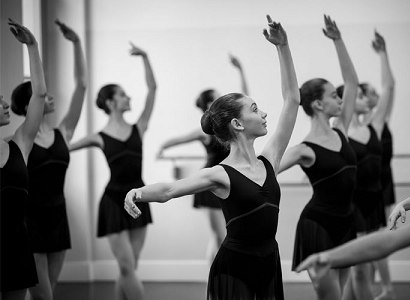Art that unites
Publish date 31-03-2024
 In the heart of Milan there is a school where Ukrainian and Russian dancers dance together.
In the heart of Milan there is a school where Ukrainian and Russian dancers dance together.
It is the Ukrainian Ballet Academy, which since the beginning of the conflict in Ukraine has also become a shelter. Founded in 2005 by Caterina Calvino Prina, it offers a teaching method, the Vaganova, which is common to all ex-Soviet countries. Since its inception, the teachers have always been Italian, Ukrainian, Russian, Moldovan, with dozens of students and friends in different countries around the world. In February 2022, a few days after the start of the Russian aggression, messages and calls arrive on Caterina Calvino Prina's phone. She is a friend of hers who lives in Ukraine, Irina Skrypnik, also a dancer. In those moments, her neighborhood in Kiev had just been bombed and she found herself living inside the subway. "Escape, come here, we'll welcome you" Calvino Prina writes to her. No sooner said than done.
From that moment to today, around twenty other Ukrainian dancers have arrived at the Milan school, all with the desire to dance far from the conflict. Some were hosted by the Marcelline nuns, who share purposes and spaces with the Ballet Academy, others by families in Milan. Two years after their arrival, some have returned to Ukraine - "the distance from their family was too difficult", explains Calvino Prina - some have graduated, some are already working. At the Academy the routine of the 190 students (mostly girls) is tight, divided between training and ordinary lessons. «It's a life choice – explains Calvino Prina – There is fatigue, but also many dreams and desires». The last show brought to the theater, a few months ago, was The Nutcracker to the music of Tchaikovsky, a Russian composer. «There are people who criticize us because we continue to dance to Tchaikovsky, they tell us that we shouldn't because he is Russian – concludes the director – but we have decided to carry on. Tchaikovsky lived in the nineteenth century, he wrote the most beautiful ballets of the classical repertoire and then he is not just Russian, he is the common heritage of all humanity." At the Ballet Academy you learn this: art can unite, not divide.
Chiara Vital
NP February







